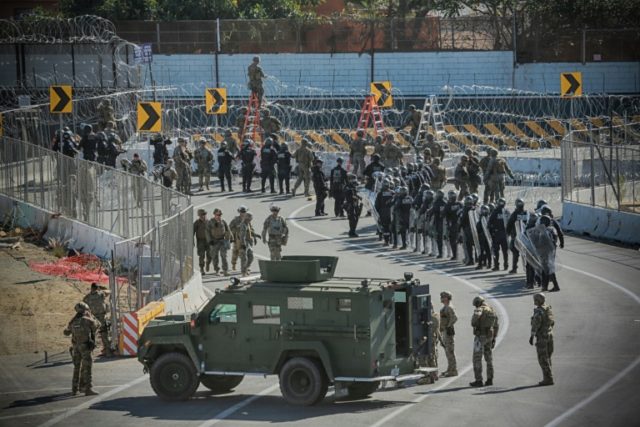The government is sending 160 soldiers to help border agents block the migrant surge that is expected if the Ninth Circuit Court of Appeals strikes down the Migrant Protection Protocols.
The MPP program has sent roughly 60,000 migrants back into Mexico, prior to their eventual asylum hearings in the United States. The return policy deters migration by preventing migrants from getting the U.S. jobs they need to repay their smuggling loans — unless they eventually win their backlogged courtroom claims.
Some of the 30,000 migrants waiting in Mexico rushed for the border February 28 when the court declared the MPP program to be illegal. The court then quickly put a stay on its decision to block the MPP until March 12, pending any Supreme Court intervention.
The California-based court also decided to allow the MPP program to operate in Texas.
Officials at the Department of Justice have asked the Supreme Court to extend the delay.
Administration officials are sending the troops to the border out of fear the migrants will try to overwhelm the border defenses on March 12.
Officials also said the extra troops could help prevent the migration of people with diseases, such as the Covid-19 disease from China.
The U.S. Customs and Border Protection (CBP) agency’s “mission is to secure our nation’s borders, and measures such as the Crisis Response Force employment allow CBP to do just that,” a senior agency official told reporters March 6. He continued:
Based on the pending MPP decision, continued concerns of large groups attempting to forcibly enter through [Ports of Entry] PoEs, and Covid-19 containment and mitigation concerns, CBP has activated the Crisis Response Force.
The Crisis Response Force will provide military police support, engineering support, and aviation support to CBP. Approximately 160 active-duty personnel will reposition from their CRS standby location at Fort Polk, Louisiana, to the southwest border in support of CBP.
Approximately 80 personnel will be deployed to PoE in El Paso, Texas, and approximately 80 personnel will be supporting the San Ysidro Port of Entry in California.
The CRF will remain at or adjacent to the selected PoEs as the operational environment evolves.
If necessary. the CRF has the ability to lift-and-shift via air or ground from one PoE to another PoE to support CBP.
The employment of the CRF is one element of CBP’s larger, comprehensive border security efforts to help CBP ensure everyone’s safety and security, to include travelers, asylum seekers, business stakeholders, and our own employee.
This CRF effort should not be confused with a current and distinct Texas National Guard annual training status deployment that is being conducted as the port of entry in Brownsville, Texas. Texas National Guard routinely conducts training events with CBP components.
The MPP program has played a crucial role in blocking the rush of Central Americans through the “Flores” legal loophole in the bord wall. Migrants open the loophole by bringing a child, so forcing officials to release them into the U.S jobs market after just 20 days.
In February, officials released just 2,000 migrants out of 36,000 arrivals. In May, border officials released 80,000 migrants as 140,000 arrived at the border.
However, border agents have not stopped the flow of illegals, nor the legal inflow of “Unaccompanied Alein Children.”
In Washington, Congress continued to support the huge inflow of visa workers including H-2B blue-collar workers, H-2A agriculture workers, and H-1B white-collar workers.

COMMENTS
Please let us know if you're having issues with commenting.